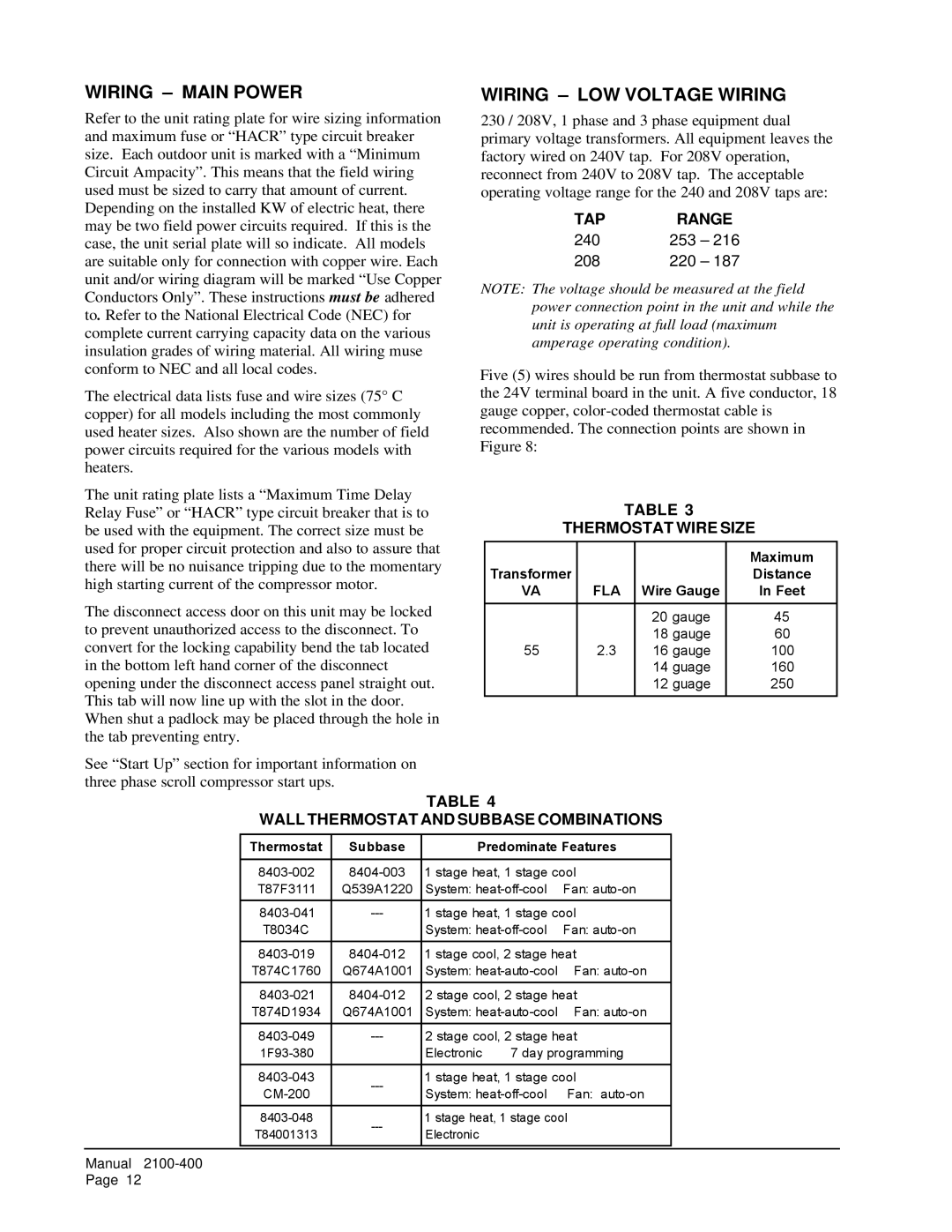WL423, WL602, WL484 specifications
Bard WL484, WL602, and WL423 are part of Bard's innovative line of heating, ventilation, and air conditioning (HVAC) products designed to meet the diverse needs of residential and commercial spaces. Each model is characterized by advanced technologies that enhance energy efficiency, performance, and user comfort.The Bard WL484 model showcases a heating capacity of 48,000 BTU and operates efficiently in various environments. This unit incorporates a robust heat exchanger, which allows for rapid heating without sacrificing efficiency. One of the standout features of the WL484 is its integrated control system that allows users to set precise temperatures, enhancing comfort while minimizing energy usage. Additionally, this model is designed with superior airflow capabilities, providing even temperature distribution throughout the space it serves.
The Bard WL602, with a heating capacity of 60,000 BTU, emphasizes versatility and performance. This unit is equipped with a multi-speed blower that adjusts the airflow according to the specific heating requirements of the environment. The WL602 is engineered with a durable cabinet that resists corrosion, ensuring longevity and reduced maintenance needs. It also includes advanced diagnostic capabilities, allowing users to identify issues quickly and streamline servicing. With its enhanced efficiency ratings, the WL602 is a solid choice for larger spaces requiring reliable and economic heating solutions.
The Bard WL423 model serves as an efficient option for smaller spaces with a heating capacity of 24,000 BTU. This compact unit is designed to fit into tighter spaces while delivering exceptional performance. One unique characteristic of the WL423 is its quiet operation, making it suitable for environments where noise levels must be kept to a minimum, such as offices or bedrooms. Additionally, it features energy-efficient components that help reduce operating costs over time, making it an attractive option for budget-conscious consumers.
In summary, Bard WL484, WL602, and WL423 each bring distinct advantages to the HVAC market, with features designed for optimal performance, energy efficiency, and user satisfaction. These models represent Bard's commitment to quality and innovation, ensuring that customers can find the right solution for their specific heating needs. Whether for residential or commercial applications, Bard continues to be a trusted name in climate control technology.
